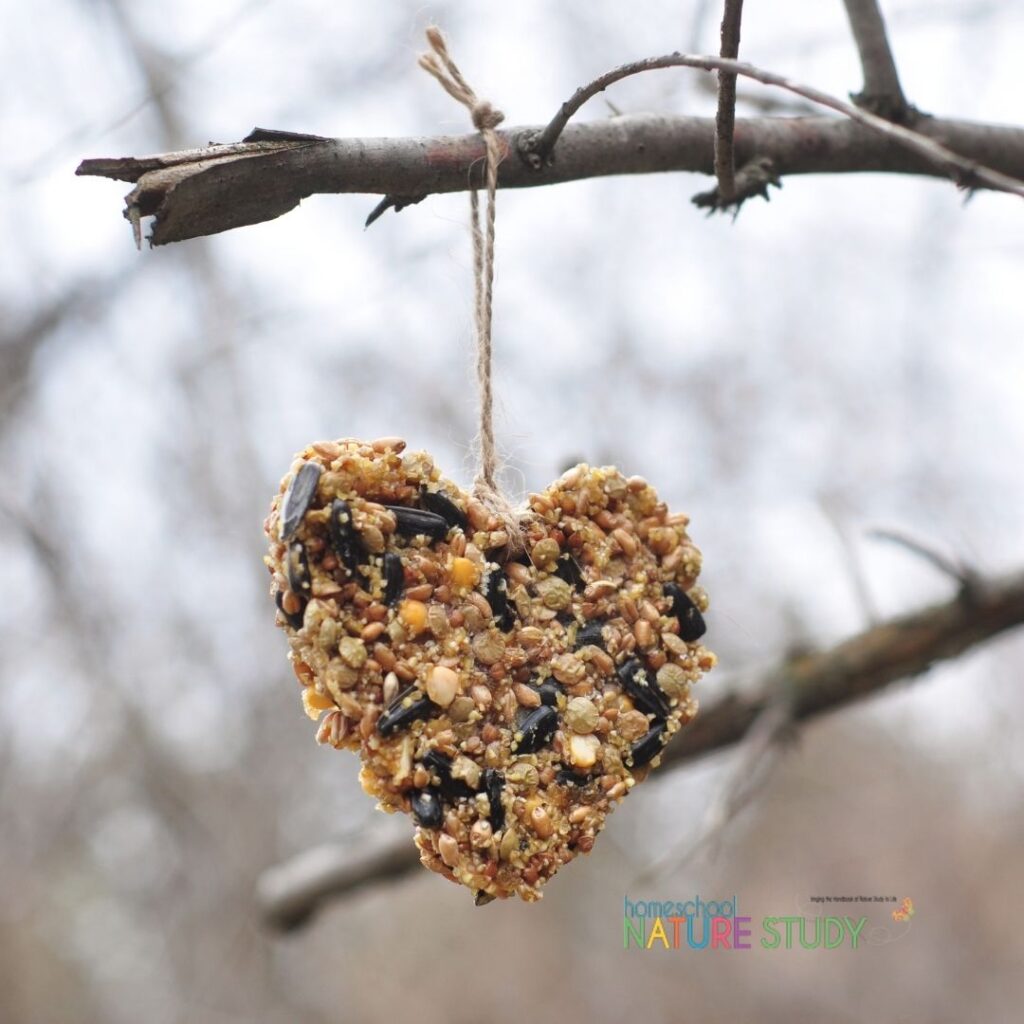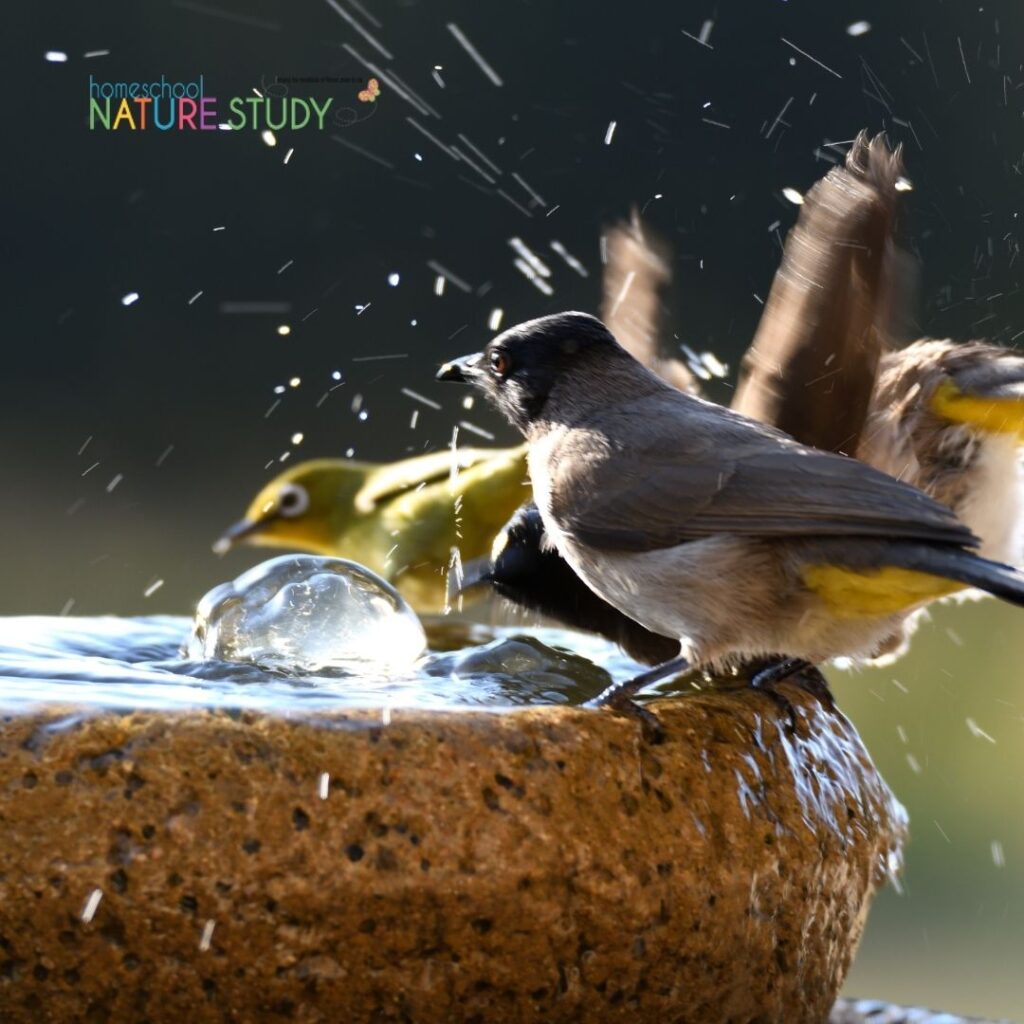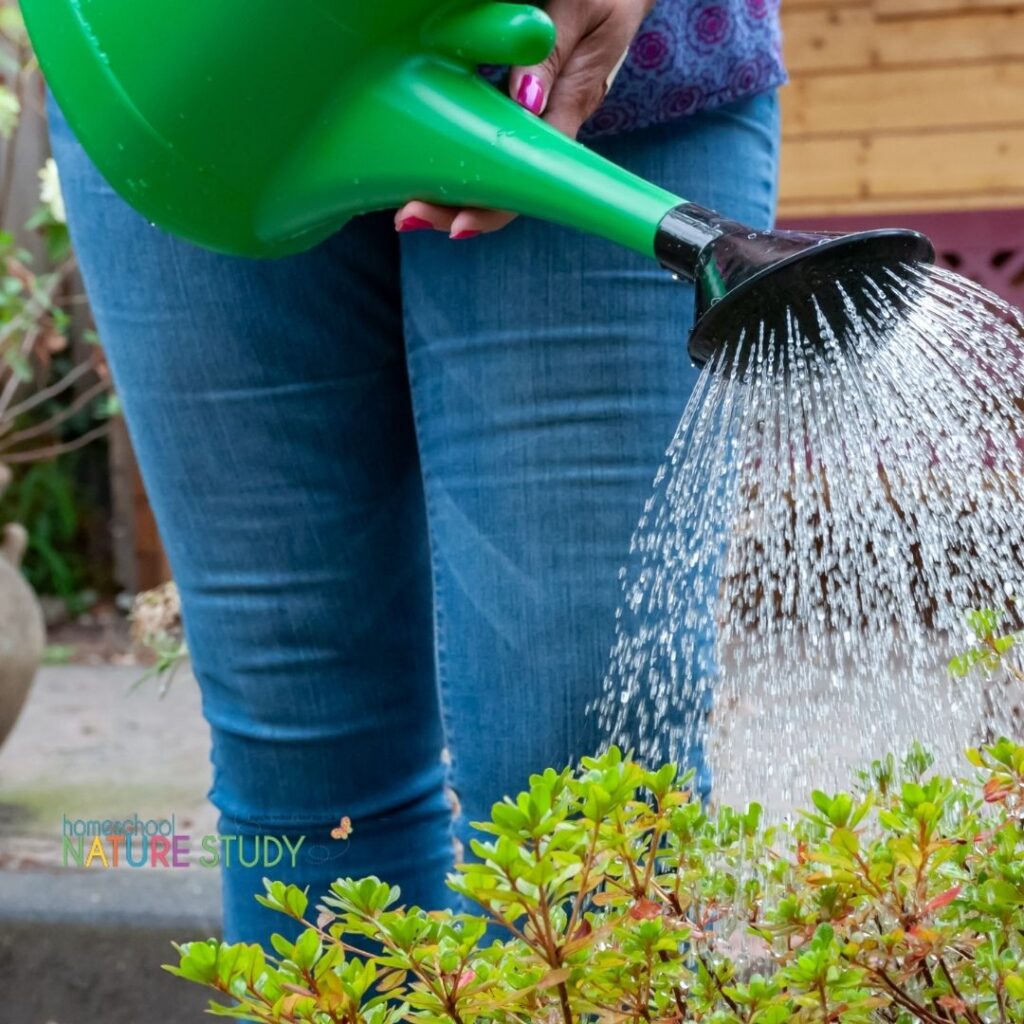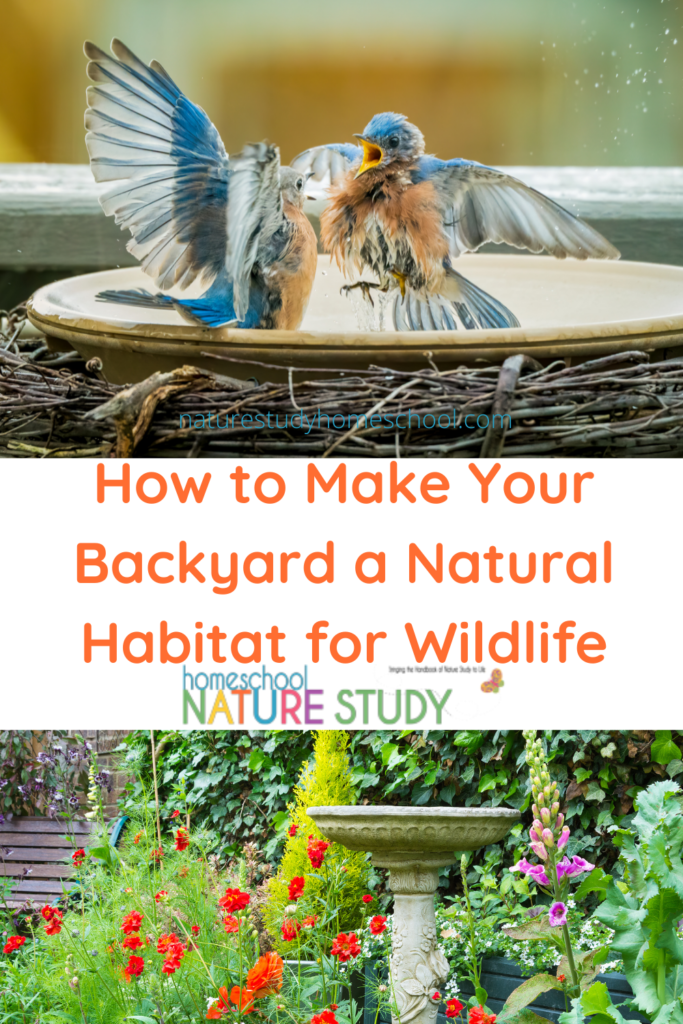
Here are some simple ways you can make your backyard a natural habitat for wildlife. You will love having the opportunity to have nature come to you in your very own backyard. Involve your whole family in the project and spend some time outdoors!
When we first moved into our house over twenty years ago, the backyard was fairly generic. It had a big weedy lawn, a pine tree, a few fruit trees, blackberries along the fence, and some bushes in the back. The front yard had a magnolia tree and some lawn. Not really very inviting to either humans or animals. It was not a very big yard either and we did not have a lot of money to do big landscape projects at that time.
We didn’t set out to create a natural habitat for wildlife in our yard, but it has turned out that way with some simple ideas in mind. Working on one small area at a time we managed to eventually build up what we have now.
How to Get Started Making Your Backyard a Natural Habitat for Wildlife
Animals and Birds need some basic things in order to consider your backyard an attractive habitat.
- Food
- Water
- Shelter
- Somewhere to have their young

Food Sources for Your Backyard
Here are some ideas for food sources for wildlife:
- Wild sources of food in your backyard like blackberries and grasses that produce seeds.
- You can plant a variety of things to help provide food as well.
- We have a fig tree, a walnut tree, sunflowers every summer, and flowers whose nectar is attractive to birds and insects like trumpet vine and butterfly bush.
- A trumpet vine is a favorite of the hummingbirds when it is in bloom. There will three or four all sipping nectar on various sides of the trellis and they are amazing to watch. We also have several types of bird feeders in our yard at varying levels.
- Platform feeders, hopper feeders, hummingbird feeders, and special finch feeders are filled all year round. We have a suet feeder that we add in the winter.
- We also have a butterfly/hummingbird garden established with quite a few plants that are attractive to various kinds of butterflies.
- We have seen Tiger swallowtails already this year and we are hoping to start attracting some Monarchs with the milkweed that we have started in a patch near the back of the garden.
- We also know that a variety of mammals eat the seed under the feeders. We have seen skunks, voles, and moles. We have seen evidence of other rodents but can’t be sure exactly what else is out there at night.

Water Sources for Your Backyard Nature Study
A water source is essential in attracting wildlife to your backyard natural habitat.
- We have two bird baths that are available for the birds year round. We also have noticed the birds perched on the potted plants getting water from the base. The birds also enjoy the rainbird sprinklers when they are on and we frequently see blackbirds shaking around in the spray.
- We have seen little raccoon footprints around the bird bath as well. We know we have at least one raccoon because we have seen him up on our deck at night looking in the back window. Too cute.

Shelter for Wildlife
Here are some ideas for shelter for wildlife in your backyard natural habitat:
- We have not been successful with having birds nest in our birdhouse, but we have had several birds over the years make nests in our magnolia and sequoia trees.
- There are also birds that nest in the eave of our neighbors garage right along the fence line. They fly in and out and use our feeders. Believe it or not, the birds fly into the space under the beam. If you click the photo you can see where they go in and out.
- We have three large areas where we have shrubs for the birds to hide in. These photinia bushes behind the garden provide a great spot for the finches and little birds to perch as they wait their turn at the feeders.
- These areas are near the feeders and the bird baths and the birds seem to like having the option to fly into the shrub and then check the feeder out before perching to eat a meal. The bushes come alive in the winter when the weather is wet because so many birds take shelter there out of the weather.
- The back oak tree has bats from time to time and if we come out at night we can see them flying around the backyard eating insects midair.
- We have a section of our yard that has big river rocks and this is where you will find a variety of insects living underneath and also a shelter for the reptiles in our yard. Yes, we have a couple types of lizards and other reptiles in our yard and the boys love it.
- The grape vines which we planted last year are providing another spot for the birds to perch plus the added bonus of some seedless grapes for us at the end of the season.
- Another great place that we know we have provided shelter is within our compost pile. This really could go under the category of food as well since we know that birds and other small creatures forage in the compost for meals.

Natural Habitat: Provide a Place to Raise Young
The trees in our yard are a great place for birds to raise their babies. We just had “flying school” for the Scrub jays in our yard for the babies. They have all flown out on their own now and it was fun to watch. The hummingbirds are all up in a pine tree and a cedar tree that borders the back of our property and although we have never seen them, we know they nest and raise babies there.
We do have our limits thought….the six foot fence all the way around was in response to the mule deer that would come in and devastate a whole vegetable garden in one night. We knew we would be forcing them to go elsewhere for a meal but we live fairly close to a riparian habitat that they can graze and get water from. They still make themselves at home in our unfenced front yard and I hear them on hot summer nights snacking on my roses. I guess they must be hungry. The photo above shows where on the side of the house outside the fenced in area, the deer are still taking shelter here and sleeping. You can see where the grasses and plants are all flattened down from where they lay down and rest.
Last year we had a family of skunks move in under the back deck. I had the boys fill up the crevice with rocks as soon as they moved out. As much as I love wildlife, having a skunk family that near to our house was not pleasant…you can only imagine.
So there are some ideas to get you started with your backyard natural habitat. Take it one section and one idea at a time and soon you will have your own nature study laboratory right outside your back door. It has taken us over twenty years to build up the different aspects but it has been a labor of love. We are continually adding little things to help make the backyard beautiful and also attractive to birds and other animals.
You might be interested in what the National Wildlife Federation says about building a backyard natural habitat.
Create A Wildlife Habitat
You will also like these ideas for Creating Your Backyard Homeschool Nature Study Laboratory.

Join The Homeschool Nature Study Membership for Year Round Support
You will find hundreds of homeschool nature studies plus all the Outdoor Hour Challenges in our Homeschool Nature Study membership. There are 25+ continuing courses with matching Outdoor Hour curriculum that will bring the Handbook of Nature Study to life in your homeschool! In addition, there is an interactive monthly calendar with daily nature study prompt – all at your fingertips!
written by Barb June 2009, updated by Tricia February 2022


What an oasis. We wish we could come and hang out in your garden as well – but I think we’re on opposite coasts, and we’re not birds…
O yes and you have very red earth: I love it!
Hi Kat,
It would be fun to visit each other’s gardens and glean some tips. I enjoy reading how your progress is coming along as you add each new thing.
We were created to be gardeners.
Barb-Harmony Art Mom
What a great job your family has done in making a wildlife habitat!
It is so nice to see the fruit of your labor and I so appreciate knowing it was a family effort and that it did not happen overnight. We moved into our home just over a year ago and are in the early stages of making our yard welcoming to wildlife.
Thanks!
You know you’re inspiring and amazing, don’t you?! Thanks.
We live in the city and I would love to have more wildlife. I’m going to do it slowly. Thanks for the tips!
Do you have squirrels in California? If we used those platform feeders in Indiana, the squirrels would eat it all! Or is there a trick I don’t know about?
Love your blog!
Cindy in Indy
THANKS for the details and lovely post! This has given me some good things to think about and I really enjoyed reading it. JoyH
How wonderful Barb, thank you so much for sharing. You reminded me about the bird bath I have been wanting for several years, maybe for our anniversary.
We live on a city lot as well but there are ways to make your yard seem more private and natural. You just have to have a little vision and use trial and error.
Squirrels….we have squirrels, both gray and fox squirrels. I think the reason they do not bother much with our feeders is because we have other sources of food available in other parts of the yard. We have oaks with acorns and a walnut tree that I seem them in once the fruit comes on. The neighbors have a couple of pines that they eat the cones from as well. My parents live in near-by but they have trouble with squirrels so they had to go to “squirrel proof” feeders. The squirrels eventually figure them out but they at least slow them down. My sister lives about 20 miles from us and she takes her feeders down at certain times of the year to discourage the squirrels. She still has trouble so I don’t think that is the answer either.
Deer a bigger headache in our neighborhood for us. They eat *everything*.
Barb-Harmony Art Mom
Hi Barb
I really enjoyed reading this post and I would love our backyard to be more “user- friendly”. I am going to find out some more about what sort of habitats the birds/ creatures/ natives like so that we can add more of then to our yard. You have inspired me to look into this!
Thank you Barb!
Pauline in Australia “O)
Great Pauline! I look forward to hearing about your progress. Just take it one small section at a time and have fun!
Barb-Harmony Art Mom
You’ve done so much since I’ve last seen it. Looks nice.
I know you will not post this but just had to say it.
What a beautiful back yard oasis! Great pics and post.
My favorite animal is the hawk, so I am trying to teach my daughter about them in a fun way.